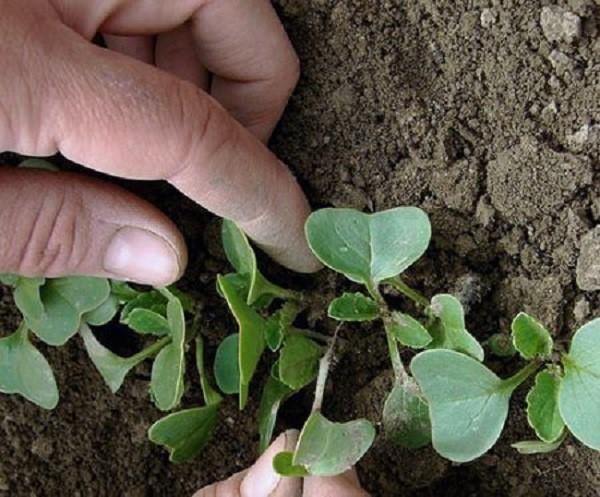We sow radish for winter use
 As you know, spring is a hot season for gardeners, because with the arrival of the first heat, they begin seasonal work related to planting garden crops. However, there are some vegetables that are sown only in summer, and the most famous of them is radish. Of course, you can plant it in the spring, but only if the harvest is planned to be preserved until winter, and not eaten in the near future, it is better to postpone planting.
As you know, spring is a hot season for gardeners, because with the arrival of the first heat, they begin seasonal work related to planting garden crops. However, there are some vegetables that are sown only in summer, and the most famous of them is radish. Of course, you can plant it in the spring, but only if the harvest is planned to be preserved until winter, and not eaten in the near future, it is better to postpone planting.
When to sow?
Radish is a cold-resistant culture of short daylight hours, for active growth and maturation it needs moderate lighting. If there is too much sun and it shines for a long time, the root crop will go into the arrows, and it will not be possible to remove a good harvest. Summer cultivars for human consumption can be sown at the end of April. But in order for the vegetable to be stored for a long time, the sowing of seeds must be postponed until July.
The optimal time for sowing late and mid-season radish varieties is the first decade of July. Rapid ripening varieties can be sown at the end of the month.
Where to sow?
If possible, it is better to set aside a separate area in the garden for radish, which is not shaded by trees. In the spring, before digging, scatter compost and peat, or ash with nitrophos on it.
Radish does not tolerate acidic soil, it grows poorly in it, often gets sick, and then the harvest is not stored. With an increased acidity of the site, lime must be added to the ground in the fall.
In a small garden radish can be planted between potatoes, onions or tomatoes, but only if other cruciferous species have not previously grown on this site.
How to sow?
Before proceeding to sowing, the seeds must be soaked in a saline solution (1 tbsp of water 1 tbsp of salt), then select the largest ones and pour them for a couple of hours with a solution of pink potassium permanganate to prevent diseases.
On the site, make grooves with a row spacing of at least 30 cm.Place the prepared seeds in the grooves, leaving about 15 cm between them.
Experienced gardeners advise putting seeds in nests, 2-3 seeds in one, and after they sprout, remove weak sprouts.
If the soil was not moist enough during sowing, the seed grooves should be watered abundantly. Sprinkle with soil on top and compact a little. It is not worth covering the seeds deeper than 2.5 cm, otherwise they will take a long time and difficult to germinate. To prevent moisture from evaporating from the beds too quickly, spread the mulch.